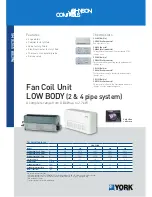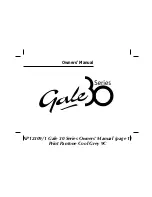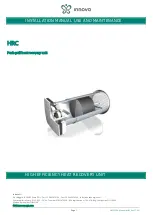
9
crossover circuit, which achieves the desired phase-consistent sound field over a wide listening area.
If you must situate the speakers close together, with a close listening position for near field
applications (such as in a recording studio), you may not need to toe the speakers in towards you, but
you will need to sit with your ears on the tweeter’s vertical axis for flattest frequency response. The
treble response and depth of field will be differentiated when you compare zero toe in with full toe in,
please experiment. Note that recording studio near-field monitoring will require substantial
absorption or diffusion of the boundaries closest to the M/T modules.
In an average room situation, where the distance between the speakers is equal or lesser than the
seating distance, use the following Pink Noise Listening Test to determine the best location for image
focus:
PINK NOISE LISTENING TEST
Play a pink noise source such as a CD with test tones or an FM tuner set between stations (with
muting turned off). The goal of this test is to determine whether the room’s reflection patterns are
interfering with the image focus built into the VR-5 design. You will notice
one of two
sonic effects
when listening to pink noise, and #1 is what you want:
#1. If the speakers are placed properly and the room is neutral in reflective properties, your next step
is to find the correct listening distance, where the focal point of the combined sound from the two
speaker systems exists. In the correct seating area, you should hear a “ball” of noise that appears to
float between the speakers. Although noise will appear to emanate from the speakers themselves, the
center image will be strong: this is the so-called
phantom center image
. The sound from the speakers
themselves will seem slightly detached from the pink noise ball, and slightly softer in volume level.
The center ball of sound will be very strong, and you will be able to detect that the “ball” of sound is
round, with depth to the image. This is a “locked in” image with correct focus.
#2. If you are
not
sitting in the desired focal point, or if your room has too much reverberation from
side wall reflections, the noise will be diffuse, without a center image. Although you will hear noise
coming from the center, it might sound as diffuse and confused as the sound coming from the
speakers themselves. This is not the desired result! Even though the speakers may image music when
set up like this, the imaging will be weak and lack depth and focus. There won’t be enough “body” to
the images and it will be hard to hear space between the instruments.
In the event that you hear two separated sources of noise, from the speakers themselves, without a
curtain of sound between them, your room’s reflections and/or seating distance is destroying the
coherent sound that was engineered into the VR design. To eliminate this unwanted effect, you will
need to determine whether the room’s reflections are at fault, or whether you are not in the “sweet
spot.”
To find the focal point of the VR system, move forwards and backwards slowly while listening to the
pink noise “ball.” You can either rock in your listening seat, or move back and forth by several feet if
you are way out of the equilateral triangle. Using a director’s chair for this works best, as it is easy to
move. If you have a fixed seating position that can not be moved due to furniture considerations, you
will have to move the speakers either closer together, or further apart, depending on the strength of the

































